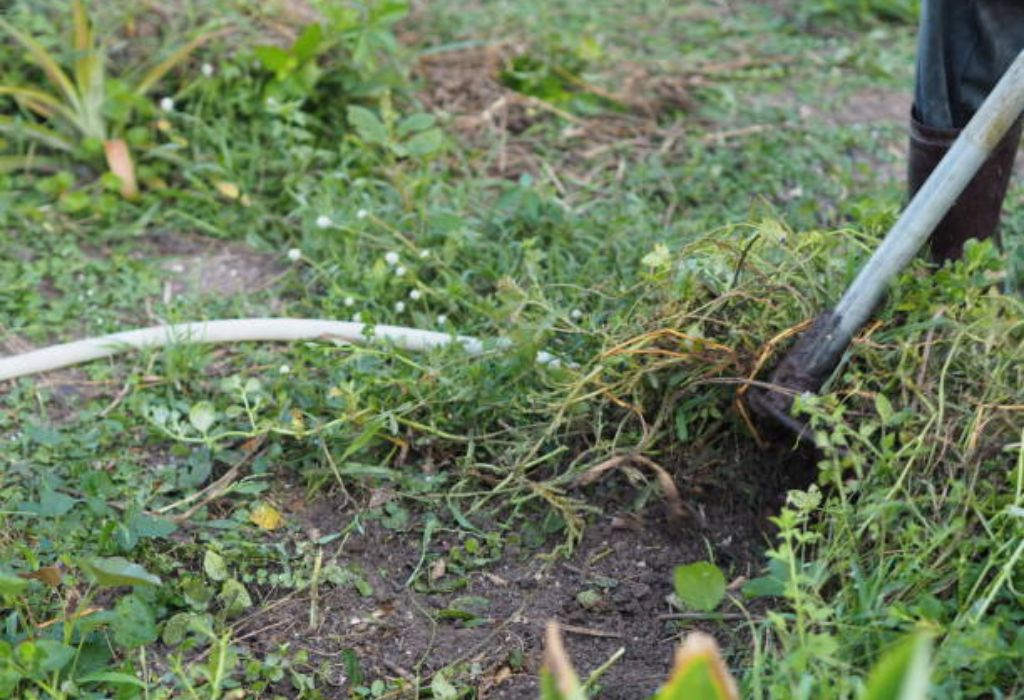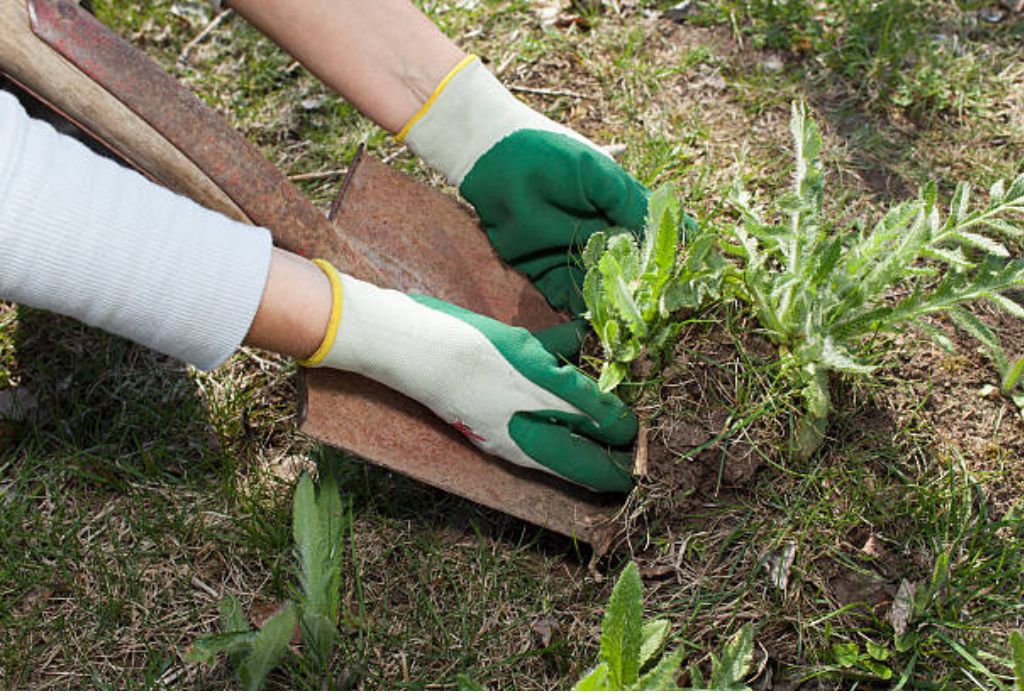Every gardener knows the frustration. You prepare your soil, plant your seeds, water them carefully—only to find weeds sprouting faster than your vegetables or flowers. These invaders not only make gardens look messy but also steal up to 30–50% of nutrients and water from your plants if left unchecked.
On average, home gardeners spend 120+ hours a year pulling weeds by hand. Imagine what you could do with that time if weeds weren’t constantly coming back.
That’s where weed suppression comes in. Instead of reacting to weeds after they grow, suppression focuses on prevention and long-term control. In this guide, you’ll learn natural and effective methods to suppress weeds in your garden so you spend more time enjoying your plants and less time fighting invaders.
I. What Does “Suppressing Weeds” Mean?

- Control vs. Suppression – Controlling weeds means removing them once they appear. Suppression means preventing weeds from growing in the first place.
- Why Suppression Works Better – It saves time, reduces garden stress, and improves soil health.
- Long-Term Benefits – Fewer weeds every year, healthier soil, and better harvests without chemicals.
II. Why Do Weeds Keep Coming Back?
- Soil Seed Bank – Weed seeds can remain dormant in soil for 5–10 years and sprout when conditions are right.
- Seed Spread – Weeds spread by wind, pets, birds, clothing, and even contaminated compost.
- Perfect Growing Conditions – Bare soil, sunlight, and moisture create ideal conditions for weeds.
- Gardening Habits – Over-tilling and frequent soil disturbance bring hidden seeds to the surface.
Pro Tip: Every time you disturb bare soil, you invite new weeds to germinate.
III. Best Natural Ways to Suppress Weeds in Garden
1. Mulching
- Organic mulch like straw, wood chips, shredded leaves, and grass clippings not only block sunlight but also improve soil as they decompose.
- Inorganic mulch like gravel, plastic sheeting, or landscape fabric lasts longer but does not enrich soil.
- Apply mulch 2–3 inches thick and refresh it annually.
Mulching alone can reduce weed growth by up to 80%.
2. Dense Planting & Ground Covers
- Close plant spacing shades soil, preventing weed seeds from sprouting.
- Use fast-growing crops or flowers to cover soil quickly.
- Plant ground covers such as clover, thyme, or creeping Jenny to form living weed barriers.
3. Cover Crops
- Plant rye, clover, or alfalfa during the off-season.
- They block weed growth while enriching soil with nutrients.
- Cover crops suppress weeds by 50% or more and improve long-term soil structure.
4. Soil Solarization
- In hot months, moisten soil and cover it with clear plastic.
- Leave it for 4–6 weeks.
- The heat kills weed seeds, pests, and harmful fungi.
5. Smart Watering
- Use drip irrigation instead of overhead watering.
- Target water directly at plant roots instead of feeding weeds.
- Keeps moisture where it’s needed and reduces weed germination.
6. Raised Beds & Containers
- Raised beds allow you to control soil quality and reduce weed invasion.
- Containers are almost weed-free when filled with clean potting mix.
- Both methods reduce reliance on chemicals and heavy weeding.
7. Natural Weed Barriers
- Use landscape fabric under mulch for double protection.
- Stone, gravel, or wood-chip pathways stop weeds from spreading into beds.
- Garden edging prevents grass weeds from creeping in.
IV. Eco-Friendly Weed Suppression Alternatives
- Homemade sprays – vinegar and dish soap for patios and walkways.
- Flame weeding – kills young weeds quickly, best for driveways and edges.
- Corn gluten meal – a natural pre-emergent that prevents seeds from sprouting.
V. Mistakes Gardeners Make
- Over-tilling soil, which brings buried weed seeds to the surface.
- Allowing weeds to flower and produce seeds.
- Using low-quality compost or mulch that contains weed seeds.
- Relying entirely on chemical sprays, which harm soil microbes and pollinators.
VI. Seasonal Weed Suppression Strategy

- Spring – Apply mulch early, plant fast-growing crops, and start cover crops in unused beds.
- Summer – Maintain drip irrigation, hand-pull weeds weekly, and refresh mulch.
- Fall – Add compost, rotate crops, and sow cover crops to prepare for winter.
- Winter – Clear debris, store tools, and plan next year’s weed prevention strategy.
VII. Natural vs. Chemical Weed Suppression (Comparison Table)
| Method Type | Best For | Advantages | Disadvantages | Long-Term Effectiveness |
| Natural Mulching | Vegetable & flower beds | Improves soil, reduces weeds by up to 80%, eco-friendly | Needs annual refreshing | High – builds soil health each year |
| Cover Crops | Off-season beds, veggie gardens | Suppress weeds by 50%+, add nutrients, protect soil | Takes planning & timing | Very High – improves soil + suppresses weeds |
| Ground Covers | Borders, small garden areas | Low-maintenance, attractive, blocks sunlight to weeds | Competes for water in dry climates | High – permanent suppression |
| Drip Irrigation | Veggie beds, raised beds | Direct water to crops, reduces weed growth | Setup cost | High – reduces weed seed germination |
| Flame Weeding | Driveways, paths, edges | Instant results, no chemicals | Safety risk, not for all areas | Medium – works on young weeds only |
| Corn Gluten Meal | Veggie beds (pre-planting) | Natural pre-emergent, prevents seeds germinating | Timing critical, less effective on mature weeds | Medium – good seasonal tool |
| Chemical Herbicides | Large fields, quick fixes | Fast results, less labor | Harmful to soil life, pollinators, and environment | Low – weeds often return stronger |
VIII. FAQs: Weed Suppression in Gardens
- What is the best long-term method to suppress weeds?
Mulching and cover crops combined give the best long-term results. - Can mulch really suppress weeds?
Yes, when applied thickly and refreshed regularly, mulch blocks 70–80% of weed growth. - Are cover crops effective in small gardens?
Absolutely. Even small beds benefit from rye or clover cover crops. - Does vinegar work for weed suppression?
Vinegar burns back weeds but works best on young growth in non-crop areas. - How often should I refresh mulch?
Once a year, preferably in spring or after heavy rains.
IX. Key Statistics Gardeners Should Know
- Weeds reduce crop yield by 30–50% if left uncontrolled.
- Gardeners spend 120+ hours per year on weeding tasks.
- A single dandelion plant can release 15,000 seeds, many viable for years.
- Mulching reduces weed growth by up to 80%.
- Cover crops cut weed pressure by 50% or more while improving soil.
Conclusion
Suppressing weeds doesn’t mean endless weeding sessions. By focusing on prevention and long-term strategies—like mulching, cover crops, drip irrigation, and raised beds—you can drastically cut down the time spent pulling weeds.
Think of weed suppression as an investment. The more effort you put into soil coverage and prevention now, the fewer weeds you’ll face in the years ahead. A garden with healthy soil, thriving plants, and minimal weeds not only saves you time but also rewards you with stronger harvests and beautiful landscapes.
Start small, stay consistent, and you’ll enjoy the results of a weed-free garden for years to come.
I’m Maya L. Greenwood, a lifelong plant lover who believes anyone can grow something beautiful with the right guidance. After years of testing soil mixes, pruning methods, irrigation tricks, and pest-safe solutions, I started EasyGardenTips.com to turn hard-won lessons into step-by-step advice. From seed starting and container gardens to composting and seasonal checklists, my goal is to make gardening simple, sustainable, and fun.
